World War One Medals
Samuel Woodfill
Medal of Honor WW1
Awarded the Medal of Honor for single-handedly neutralizing three German Machine Gun nests while suffering from the effects of mustard gas. He lead his men back to the American lines with no casualties.
General Pershing called Major Woodfil the most outstanding soldier of World War 1.
Awarded the Medal of Honor on 9 February 1919. Also the recipient of the French Legion d'honneur in the degree of Chevalier, the French Croix de guerre with bronze plan, the Montenegrin Order of Prince Danilo I in the degree of Knight and the Italian Croce al Merito di Guerra among other awards.
"So legendary was Woodfill's renown, that almost 11 years after the war ended, a Polish Army delegation presented him two medals. The presentation occurred during the 11th Annual National Convention of the American Legion held in Louisville, Kentucky from 30 September - 3 October 1929." https://en.wikipedia.org/wiki/Samuel_Woodfill
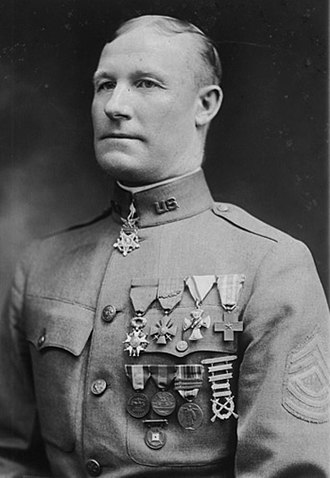
Served 1901-1923
1942-1944
Participated in the Meuse-Argonne offensive.
Served in the 60th Infantry, 5th Division.
He served in WW1, the Philippine-American War, and WW2.
Born in Belleview, Indiana, Jefferson County in January 1883. He died at age 68 in 1951 and is buried in Arlington National Cemetery.
World War 1 Medals
The following medals and awards are often listed on the Veterans database:
Many thanks to the Indiana War Memorial and Wikipedia for the following images.and information.
Medal of Honor
The highest award given. The Medal of Honor is awarded to a person, while a member of the Army, distinguishes himself or herself conspicuously by gallantry and intrepidity at the risk of his life or her life above and beyond the call of duty while engaged in an action against an enemy of the United States; while engaged in military operations involving conflict with an opposing foreign force; or while serving with friendly foreign forces engaged in an armed conflict against an opposing armed force in which the United States is not a belligerent party. The deed performed must have been one of personal bravery or self-sacrifice so conspicuous as to clearly distinguish the individual above his comrades and must have involved risk of life. Incontestable proof of the performance of the service will be exacted and each recommendation for the award of this decoration will be considered on the standard of extraordinary merit. See: Samuel Woodfill, Jefferson County, Indiana, WWI Medal of Honor recipient.
US Medal of Honor
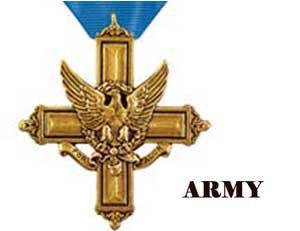
US Distinguished Service Cross
Distinguished Service Cross
Awarded to a person who while serving in any capacity with the Army, distinguished himself or herself by extraordinary heroism not justifying the award of a Medal of Honor; while engaged in an action against an enemy of the United States; while engaged in military operations involving conflict with an opposing or foreign force; or while serving with friendly foreign forces engaged in an armed conflict against an opposing Armed Force in which the United States is not a belligerent party. The act or acts of heroism must have been so notable and have involved risk of life so extraordinary as to set the individual apart from his or her comrades.
There are more than 6,300 recipients of this honor in World War 1.
US Navy Cross
Navy Cross
Awarded to a person who, while serving in any capacity with the Navy or Marine Corps, distinguishes himself by extraordinary heroism not justifying the award of the Medal of Honor while engaged in an action against an enemy of the United States; while engaged in military operations involving conflict with an opposing foreign force; or while serving with friendly foreign forces engaged in an armed conflict against an opposing armed force in which the United States is not a belligerent party.
There are over 1,800 recipients from World War One.
Silver Star
Awarded to a person who, while serving in any capacity with the U.S. Armed Forces, is cited for gallantry in action against an enemy of the United States while engaged in military operations involving conflict with an opposing foreign force, or while serving with friendly foreign forces engaged in armed conflict against an opposing armed force in which the United States is not a belligerent party. The required gallantry, while of a lesser degree than that required for the Distinguished Service Cross, must nevertheless have been performed with marked distinction. There were 661 Silver Stars awarded to members of the Armed Forces that fought in World War 1.
US WW1 Victory Medal
Awarded to all enlisted who participated in a theatre of war between April 6, 1917, and November 11, 1918. 5,700,000 were issued bearing the individual's Service #, Rank, Name, and Unit
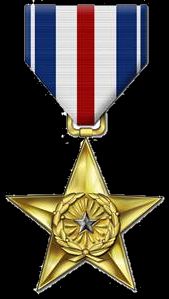
US Silver Star
European Awards granted to our veterans:
Croix de Guerre (France)
Awarded for bravery to military personnel mentioned in dispatches by a general or commanding officer. For subsequent acts of bravery, the recipient was awarded a palm leaf for Army citations, a gold star for Corps citations, a silver star for Division citations or a bronze star for Brigade and Regimental citations. Awards from other nations of parallel honor to the Croix de Guerre: Croce di Guerre (Italy), and the Croix de Guerre (Belgium).

Military Cross and Military Medal
(Great Britain)
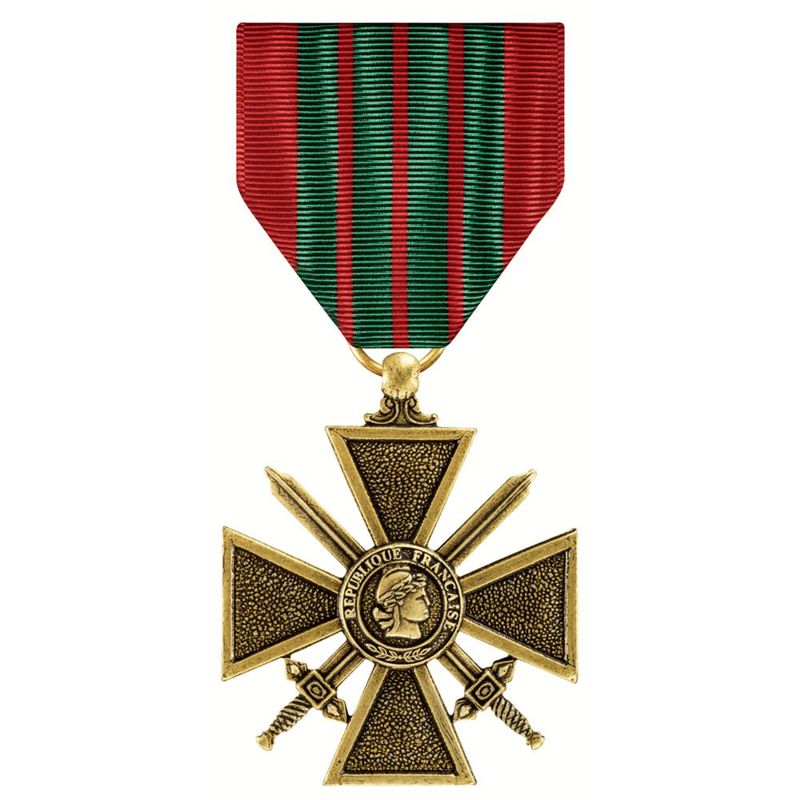
Croix de guerre (France)
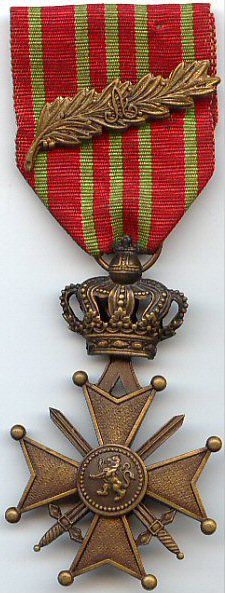
Croix de Guerre (Belgium)
Military Cross and Military Medal (Great Britain)
The Military Cross and the Military Medal were created to recognize the gallantry of junior officers in the field. The two were awarded for "gallantry in the field," the only difference being that the MC was for officers (although not above the rank of captain), and the MM for other ranks. In both cases, additional awards are indicated by silver bars worn over the ribbon.
Croix de Guerre
Belgium
Croix de Guerre translates to "Cross of War". This medal is equivalent to the French Croix de Guerre but is issued by the Kingdom of Belgium for bravery. The European countries were quick to recognize valor in the American troops.

French Legion of Honor
The premier order of the French republic and is conferred without regard to the national origin on the sole condition that whoever is awarded swears to uphold liberty and equality. The emperor Napoleon intended membership in the Legion of Honor to be a distinction of such illustriousness that it would fire people's imagination, spur soldiers to valor, and be held in high esteem in other countries.
Verdun

Marne
Unofficial French Medals
Awarded for service in specified battles (not listed in official records so often not cited on the database.)
These medals were not official and often awarded by the town's themselves in appreciation of the soldier's participation. They were not to be worn on dress uniforms.
There are several variations on the actual medals.
Saint Mihiel

Chateau-Thierry
